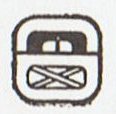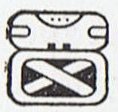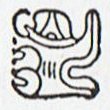3. The right foot of Bootes is standing on Mons Menalus:
Allen: "Mons Maenalus, at the feet of Boötes, was formed by Hevelius, and published in his Firmamentum Sobiescianum; this title coinciding with those of neighboring stellar groups bearing Arcadian names. It is sometimes, although incorrectly, given as Mons Menelaus, - perhaps, as Smyth suggested, after the Alexandrian astronomer referred to by Ptolemy and Plutarch. The Germans know it as the Berg Menalus; and the Italians as Menalo. Landseer has a striking representation of the Husbandsman, as he styles Boötes, with sickle and staff, standing on this constellation figure. A possible explanation of its origin may be found in what Hewitt writes in his Essays on the Ruling Races of Prehistoric Times: The Sun-god thence climbed up the mother-mountain of the Kushika race as the constellation Hercules, who is depicted in the old traditional pictorial astronomy as climbing painfully up the hill to reach the constellation of the Tortoise, now called Lyra, and thus attain the polar star Vega, which was the polar star from 10000 to 8000 B.C. May not this modern companion constellation, Mons Maenalus, be from a recollection of this early Hindu conception of our Hercules transferred to the adjacent Bootes?" Lyra (Tortoise) is in the 19th hour:
18½h / 24h * 365 + 80 = ca 360. Vega is today close to the end of the year. But the Mayans seem to have stopped their precessional clock, because their turtle Kayab lies a month earlier:
The following Cumhu contains a symbol for bread (kan = maize, at bottom of the glyph) and beyond the reaping, threshing, and winnowing will in due time come eating (kai):
Arcturus is rising heliacally in day 216 counted from spring equinox north of the equator and this number is important in the rongorongo texts. 18 * 20 = 360 = 216 + 144 = 12 * (18 + 12). |























